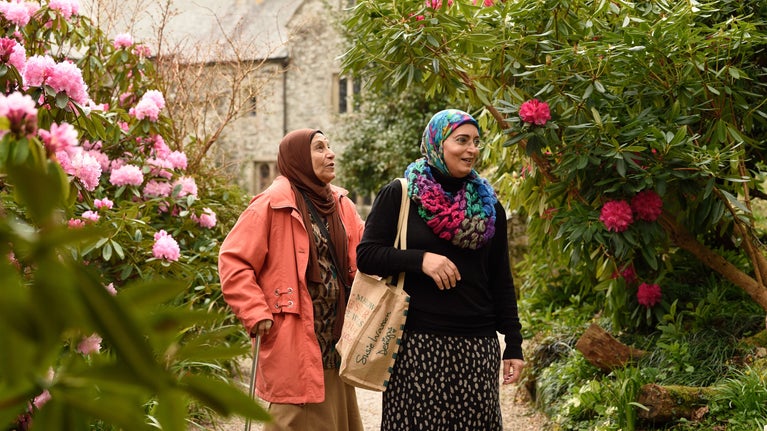
Discover more at Cotehele
Find out when Cotehele is open, how to get here, the things to see and do and more.
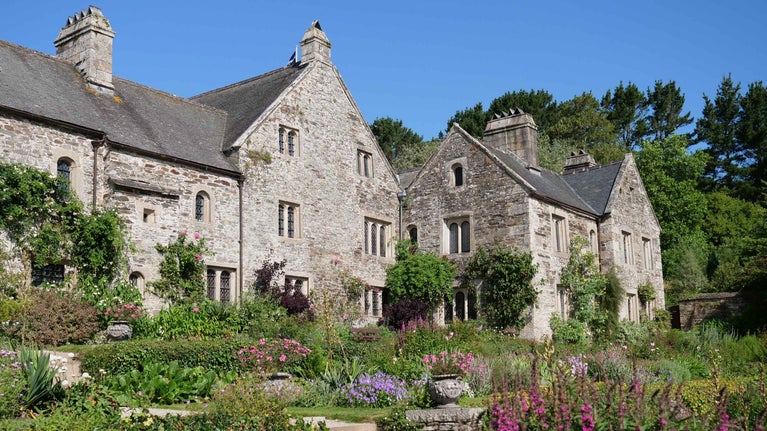
The medieval estate of Cotehele, on the banks of the River Tamar in Devon, became home to generations of the Edgcumbe family, powerful landowners with political ambition and maritime interests. Re-presented in the 18th century as a second home to show off an ancient lineage, Cotehele became a showpiece within a rich landscape for mining, agriculture and nature.
The Edgcumbe family acquired the medieval estate of Cotehele through William Edgcumbe’s marriage to heiress Hilaria de Cotehele in 1353. Originally part of the manor of Calstock its Cornish place-name ‘Cotehulle’ means ‘wood by the riverside’. Local mining interests as well as wider land ownership saw the family grow in wealth and influence. By 1480 Cotehele was described as a ‘mansion place’, incorporating an earlier chapel.
Richard Edgcumbe (c. 1443–89) rebelled against King Richard III during the War of the Roses (1455–87) and was arrested for his troubles. He is said to have escaped and fooled his pursuers into thinking he had drowned in the river. His daring is commemorated by the Chapel-in-the-Wood, a small chapel he built on the banks of the river dedicated to St George and St Thomas a Becket.
After escaping to France, Richard was an active supporter of Henry Tudor (later King Henry VII) and was knighted on the battlefield at Bosworth in 1485. He was well-rewarded with more land, titles and a position in the royal household. He also became the controller of Devon and Cornwall’s royal silver and lead mines. This injection of money and status led to major building works at Cotehele, constructing buildings on all four sides of the courtyard plan, creating the shape of the building that is recognisable today.
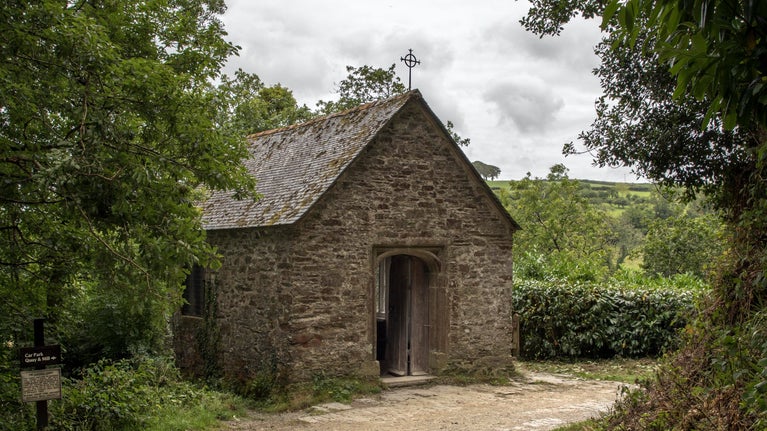
The start of a long-standing connection to the city of Plymouth began in 1493 when Richard’s son Piers Edgcumbe (1468/9–1539) married Joan Durnford (c. 1473–1525). She was heiress to her family’s estates in East and West Stonehouse, one of the three towns that unified in the 20th century to become Plymouth. They built their primary home, Mount Edgcumbe (now owned and managed by Plymouth City and Cornwall Councils), on this strategic land at the mouth of the Tamar.
From here, the family maintained and influenced interests in the developing economy of Plymouth, investing in and benefiting financially from trade and naval affairs.
By 1525, Piers Edgcumbe was one of the wealthiest men in Cornwall. Throughout the 16th and 17th centuries, the Edgcumbe family continued to share their time between Mount Edgcumbe and Cotehele, with significant investment still being made in the latter. The North West tower was added c. 1560 and much internal remodelling was undertaken during the 1650s when the family made Cotehele their main residence again after the British Civil Wars (1642–51).
Through his local maritime connections, Piers and Joan’s great-grandson Richard Edgcumbe III (1565–1639) bought shares in the Plymouth Council for New England and later acquired land in Maine, North America. His son, also named Piers (c. 1610–66), and subsequent generations, were influential figures in the British navy or in parliament and benefitted from the development of Plymouth’s dockyards and trade routes.
The house at Cotehele that you experience today was shaped by a decision in the 18th century to preserve Cotehele as a show piece rather than a lived in home. In 1742 Richard Edgcumbe (1680–1758) was made a Baron and he carried out an extensive modernisation of the house at Mount Edgcumbe. Older and unwanted furnishings made their way up the river to be kept at Cotehele.
This marked the beginning of ‘Antiquarian’ Cotehele – the conscious presentation of the house as an ancient, ancestral seat. It was dressed richly and purposefully to suggest a romantic past – and remains so to this day. This approach was cultivated by subsequent generations, in particular by Richard’s sons, Richard, 2nd Baronet (1716–61) and George (1721–95).
George and his wife Emma hosted King George III and Queen Charlotte at Cotehele in 1789. The Queen commented on the novelty of such an ‘ancient’ family home in her diary: “At breakfast we eat off the old family pewter, and used silver knives, forks and spoons which have been time immemorial in the family and have always been kept at this place.”
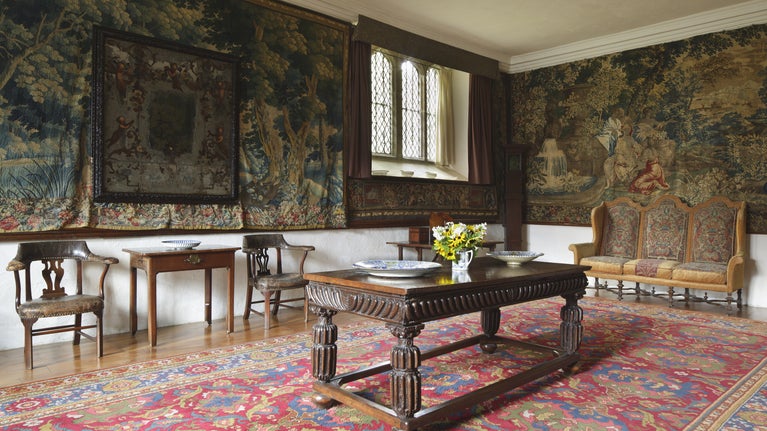
Cotehele’s collection is made up of a rich assemblage of furniture, tapestries, paintings, ceramics, armour and household objects. On first sight, Cotehele might appear to be ‘quintessentially English’ and a great ancestral seat, but closer inspection reveals collections from all over the globe, including parts of Africa and India. The Edgcumbe archives were destroyed when Mount Edgcumbe was bombed during WWII so there is no evidence for how such items were acquired. The family likely had links to antiquarian dealers and auction houses through which they may have purchased collections. Richard, 2nd Baronet, was known as a ‘patron of the arts’ and was influenced by his friend Horace Walpole, a noted art collector, whose house at Strawberry Hill he often visited.
To create an ‘ancient’ effect, many of Cotehele’s collections were re-created or re-purposed using salvaged historic elements within much newer materials. Tudor roundels can be found re-used as a centrepiece to 18th-century chairs. A very early (c. 1480–1500) English tapestry of a boar’s head, the Edgcumbe crest, is sewn into a 17th-century Dutch tapestry. Many of Cotehele’s 72 tapestries have been cut to fit within rooms and around doorframes.
Mount Edgcumbe, rather than Cotehele, remained the family’s main home for much of the 19th century. Instead, tourists were encouraged to visit Cotehele and in 1840, a first guidebook was published - Cothele on the Banks of the Tamar. This included a series of lithographic prints of the house and interiors by local artist Nicholas Condy. Many of the collections identifiable in these prints are still displayed in the same way at Cotehele to this day.
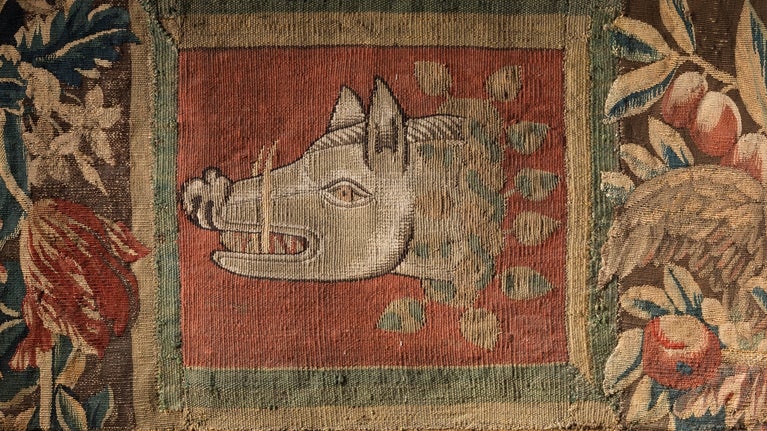
Following the death of her husband, the 3rd Earl of Mount Edgcumbe in 1861, Caroline Augusta Feilding, Countess Mount Edgcumbe (1808–81), decided to move to Cotehele. Rather than live in the main body of the house, renovations were made to the east range to create new rooms for Caroline and her daughter, Ernestine (1843–1925), who moved there in 1865.
The east range had the benefit of views down through the valley to the river. Caroline invested time in developing the valley garden. Her letters mention planting from seeds collected by her son in Europe and in Australia. She also wrote extensively to her half- brother, William Henry Fox Talbot, who sent plant seeds from his home, Lacock Abbey. Her half-brother’s invention of modern photography may have led to the annex to the library at Cotehele being used as a darkroom.
The rich landscape of the Tamar Valley provided a significant income for the Edgcumbes. Cotehele’s proximity to the river enabled both industrial and agricultural activity. Tin, copper, lead and silver ore were principally mined on Edgcumbe lands, and vessels carried cargos of lime and coal to and from the quay.
The family invested in improved farm buildings during the 18th and 19th centuries, and also benefited from the development of market gardening. Rich soil and an ideal climate saw large scale production of daffodils, soft fruits and apples.
The Second World War brought devastating change for the Edgcumbes. The heir presumptive, Lieutenant Piers Edgcumbe, was killed in action near Dunkirk on 27 May 1940. The following year, Mount Edgcumbe was destroyed during the Plymouth Blitz meaning that Cotehele suddenly became the main family home again. When Kenelm Edgcumbe, the 6th Earl (1873–1965) inherited in 1944, he described his Mount Edgcumbe as a ‘smoking ruin,’ and Cotehele an ‘antique manor house.’ He decided to rebuild Mount Edgcumbe but gave Cotehele to the National Trust.
It was acquired through the National Land Fund (now known as the National Heritage Memorial Fund) which was originally set up to purchase land and buildings as memorials for those who gave their lives in the Second World War. The Edgcumbes considered Cotehele to be a war memorial in remembrance of Lieutenant Piers Edgcumbe.

The house opened to the public after conservation work to both the house and the collections (which weren’t formally transferred until 1974). In the 1960s, focus was put on providing greater access to the industrial history of Cotehele with the repair of the quay and the opening of the Edgcumbe Arms.
The Shamrock, a Tamar sailing barge, was also brought to the quay and restored in partnership with the National Maritime Museum before being acquired by the National Trust in 2015. In the 1970s, after the Langsford family gave up their management of Cotehele mill, this was also repaired and is now part of the wider estate. The east range of the main house – formally Caroline and Ernestine’s quarters – was tenanted out until 1995 after which it was opened to visitors.
Cotehele is also known, during the Christmas season, for another tradition introduced in the 1950s – the Cotehele garland. The flowers for the garland are all sewn, cut and dried at Cotehele to form the 18 metre garland displayed in the Great Hall, a much-loved fixture in many visitors’ diaries.
The highly significant tapestry collections at Cotehele remains an ongoing focus for conservation. Most recently three 17th-century tapestries from the Mortlake factory depicting scenes from the story of Hero and Leander have been treated and are back on display in the house.
Hunt, Rachel, 2013. National Trust, Cotehele guide book
Cornish Mining World Heritage Site Cornish Mining WHS - Cornish Mining WHS - Areas - Areas

Find out when Cotehele is open, how to get here, the things to see and do and more.
There's lots to discover at the Cotehele estate. Miles of pathways lead you through ancient woodland, past a historic chapel, and to an important Victorian quay.

Take a stroll around the 5.5 hectares of Cotehele's garden where you’ll discover terraced herbaceous borders, a lily pond as well as a medieval stewpond and dovecote.

Learn about people from the past, discover remarkable works of art and brush up on your knowledge of architecture and gardens.

Explore the objects and works of art we care for at Cotehele on the National Trust Collections website.
